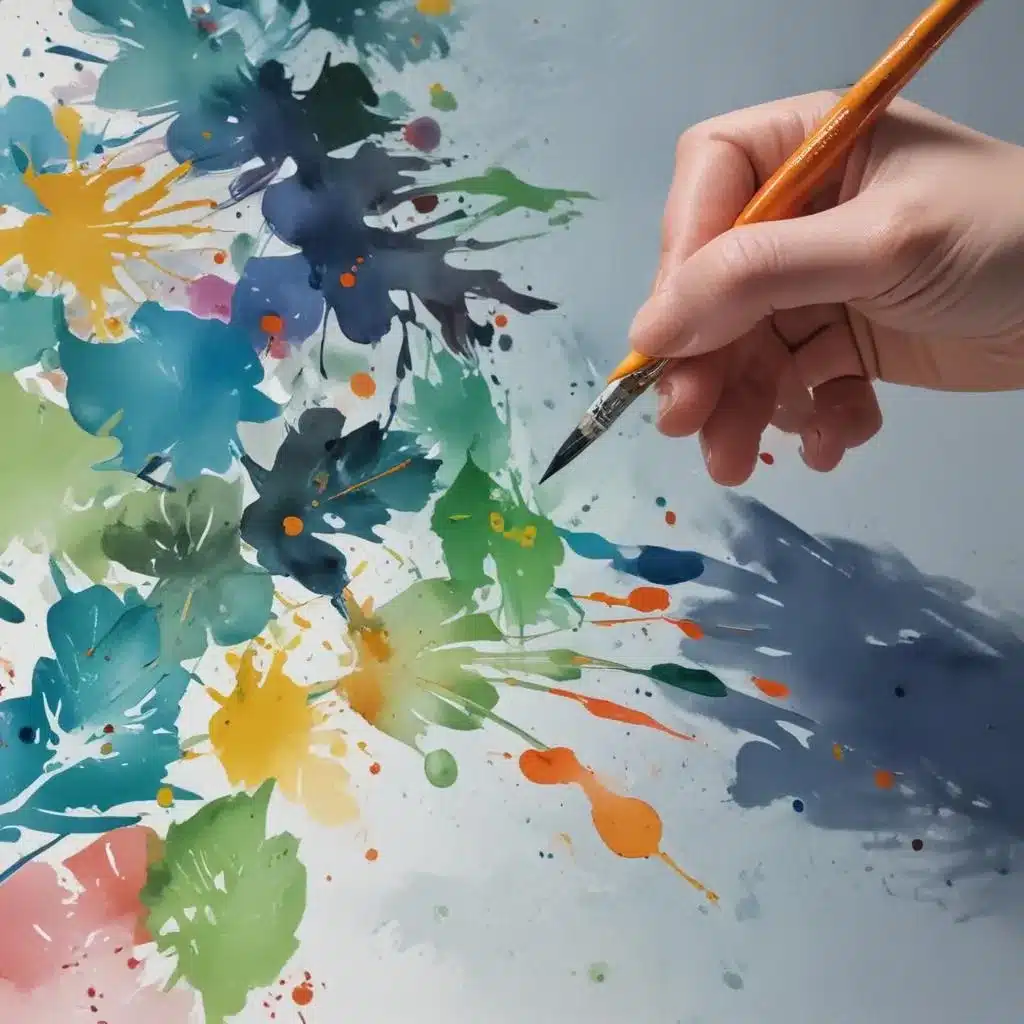
Innovative Gouache Techniques: Improvisation and Intuition for Spontaneous Painting
Innovative Gouache Techniques: Improvisation and Intuition for Spontaneous Painting
Now, this might seem counterintuitive…
Gouache, the opaque and versatile water-based medium, has long captivated artists seeking an expressive and spontaneous painting approach. Unlike the transparent fluidity of watercolor or the dense buildup of acrylics, gouache offers a unique middle ground that lends itself to both controlled and improvisational techniques. By embracing the medium’s inherent qualities, artists can unlock new realms of creative exploration, blending intuition and intentionality for dynamic, spontaneous results.
The Allure of Gouache
Gouache’s appeal lies in its adaptability. This water-soluble paint dries to a matte, velvety finish, allowing for both transparent and opaque applications. Artists can build up layers, create smooth gradients, or achieve textural effects through creative brushwork. The medium’s quick-drying nature also facilitates a sense of immediacy, encouraging a more intuitive, in-the-moment approach to painting.
Tom Fong’s renowned “free and loose” watercolor style offers a prime example of the spontaneous energy that can be achieved with water-based media. Fong’s bold, calligraphic strokes and vibrant color harmonies capture the essence of a subject, rather than rendering it realistically. Gouache, with its ability to balance control and fluidity, lends itself particularly well to this expressive, improvisational approach.
Embracing Intuition and Improvisation
When working with gouache, artists are encouraged to let go of rigid expectations and embrace the medium’s inherent unpredictability. By tapping into their intuitive responses and allowing the paint to guide the creative process, painters can unlock a sense of spontaneity and discovery.
As painter Paul Klee demonstrated through his diverse and experimental body of work, the creative journey is often one of unlearning and relearning. Klee’s paintings, which spanned a wide range of materials and techniques, exemplify a willingness to explore and embrace the unexpected.
Similarly, when working with gouache, artists can cultivate an improvisational mindset, responding to the paint’s behavior and allowing the composition to unfold organically. This might involve pouring, dripping, or spattering the paint, then building upon the resulting textures and forms. The key is to remain open to the medium’s inherent properties and to let go of preconceived notions of how the final painting “should” look.
Techniques for Spontaneous Painting
Gouache lends itself particularly well to techniques that encourage spontaneity and playful exploration. Here are a few approaches to consider:
Wet-on-Wet: Apply wet gouache onto a damp surface, allowing the paint to bleed and mingle in unpredictable ways. This can create beautiful, organic color blends and soft-edged forms.
Scraping and Scratching: Use tools like palette knives, credit cards, or even your fingernails to scrape, scratch, or lift away areas of paint, revealing the underlying layers and textures.
Splattering and Dripping: Flick, pour, or drip gouache onto the surface, then respond to the resulting patterns and shapes. This can introduce an element of chance and introduce dynamic, energetic elements to the composition.
Stencils and Masks: Incorporate stencils, found objects, or paper cutouts to create unexpected patterns and negative spaces, then build upon these forms with additional layers of paint.
Balancing Intuition and Control
While embracing the improvisational nature of gouache is essential, it’s also important to maintain a sense of intentionality and control. Effective spontaneous painting often involves a delicate balance between intuitive response and deliberate decision-making.
Artists might begin a painting by freely exploring the medium, allowing the paint to move and interact on the surface. As the composition starts to emerge, they can then step back, evaluate the visual elements, and make mindful decisions about how to refine and develop the painting. This could involve introducing more structured or geometric forms, adjusting the color palette, or emphasizing particular areas of texture and brushwork.
The key is to remain open and responsive throughout the creative process, continuously navigating between intuitive impulses and conscious artistic choices. This dynamic interplay can lead to deeply engaging, expressive, and visually compelling gouache paintings.
Cultivating an Experimental Mindset
Embracing spontaneity and improvisation with gouache also requires a willingness to experiment and embrace the unexpected. Artists should approach the medium with a spirit of playful exploration, ready to try new techniques, materials, and approaches without fear of “failure.”
Community arts programs often offer a supportive environment for artists to explore gouache and other water-based media through hands-on workshops and creative discussions. These collaborative settings can help cultivate an experimental mindset, encouraging participants to step outside their comfort zones and discover new avenues of artistic expression.
Whether working alone or in a group setting, the most rewarding gouache paintings often emerge when artists are willing to take risks, let go of preconceptions, and embrace the medium’s inherent unpredictability. By cultivating a spirit of improvisation and intuition, painters can unlock a profound sense of creative freedom and authenticity in their work.
Conclusion
Gouache, with its unique blend of opacity, fluidity, and textural possibilities, offers a versatile and expressive medium for artists seeking a spontaneous, improvisational approach to painting. By embracing the medium’s inherent qualities and cultivating an experimental mindset, painters can unlock new realms of creative exploration, blending intuitive responses with intentional decision-making.
Through techniques like wet-on-wet applications, scraping and scratching, and strategic use of stencils and masks, artists can tap into the medium’s capacity for unexpected, dynamic results. Ultimately, the most rewarding gouache paintings emerge when painters are willing to let go of rigid expectations, respond intuitively to the paint’s behavior, and engage in a continuous dialogue between impulse and control.
By sharing this ethos of improvisation and intuition, Pencil and Paint Muse aims to inspire and empower emerging artists to explore the endless creative possibilities of this versatile, expressive medium. Through detailed tutorials, creative insights, and a celebration of spontaneous painting, we hope to foster a community of painters who embrace the joy and freedom of the gouache experience.
Tip: Experiment with different media to discover your unique style